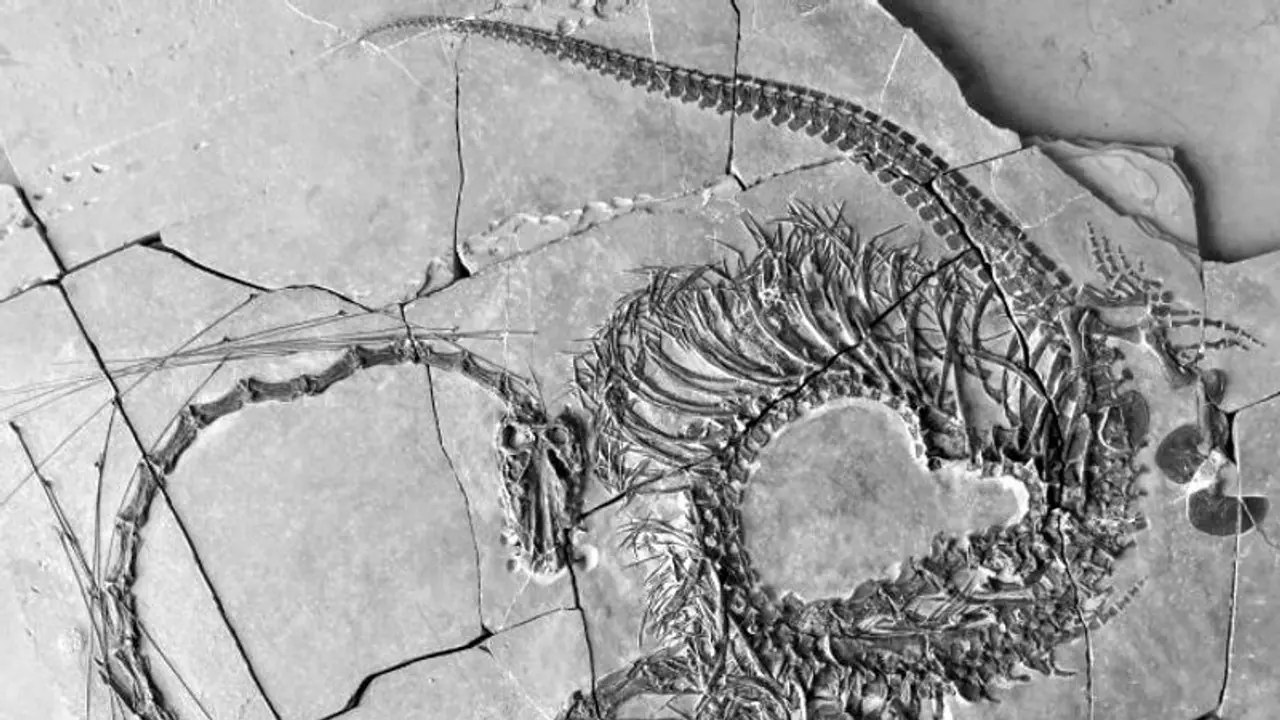Scientists have unveiled the complete skeleton of a 240-million-year-old marine reptile dubbed Dinocephalosaurus orientalis, resembling a mythical dragon, based on newly-discovered fossils from China. The creature, first identified in 2003, measured five meters in length and had a remarkably long neck
In a groundbreaking discovery, scientists have unveiled the complete skeleton of a 240-million-year-old "dragon" reptile, shedding light on the mysteries of the ancient past. National Museums Scotland (NMS) made the announcement, marking a significant milestone in paleontological research. The remarkable reptile, named Dinocephalosaurus orientalis, hails from the Triassic period in China and measures an impressive five meters in length. Although initially identified in 2003, it wasn't until a decade of meticulous study involving five newer specimens that scientists were able to reconstruct the creature in its entirety.

Dr Nick Fraser, keeper of National Sciences at NMS and a key researcher, described one of the fossils as a "beautiful complete specimen," stretching from nose to tail and bearing a striking resemblance to a Chinese dragon.
The breakthrough findings were published by an international team of researchers from Scotland, Germany, the USA, and China in the esteemed journal Earth and Environmental Science Transactions of the Royal Society of Edinburgh.
The journey to uncovering this prehistoric marvel began with Professor Li Chun from the Institute of Vertebrate Palaeontology and Palaeoanthropology in Beijing, who stumbled upon a small vertebra in a slab of limestone during a visit to a remote village in Guizhou Province, southern China, back in 2003.
Further exploration led to the discovery of bone fragments, ultimately pieced together to reveal this new species, Dinocephalosaurus orientalis. Recent fossils indicate the creature boasted 32 vertebrae, resulting in an elongated neck believed to have aided in capturing fish, though its exact function remains a topic of debate among scientists.
Dr Fraser mused on the creature's peculiar anatomy, suggesting that its long neck may have facilitated feeding in rocky waters by probing crevices for prey. Evidence of fish found in the stomach region of one fossil corroborates its adaptation to a marine environment, supported by its flippered limbs.
Comparisons were drawn between Dinocephalosaurus' long neck and another ancient marine reptile, Tanystropheus hydroides, highlighting the unique challenges in understanding life forms from the Triassic period. Despite modern-day analogues being unavailable, researchers continue to decipher the mysteries of this bygone era, driven by a passion for uncovering the peculiarities of Earth's ancient inhabitants.
